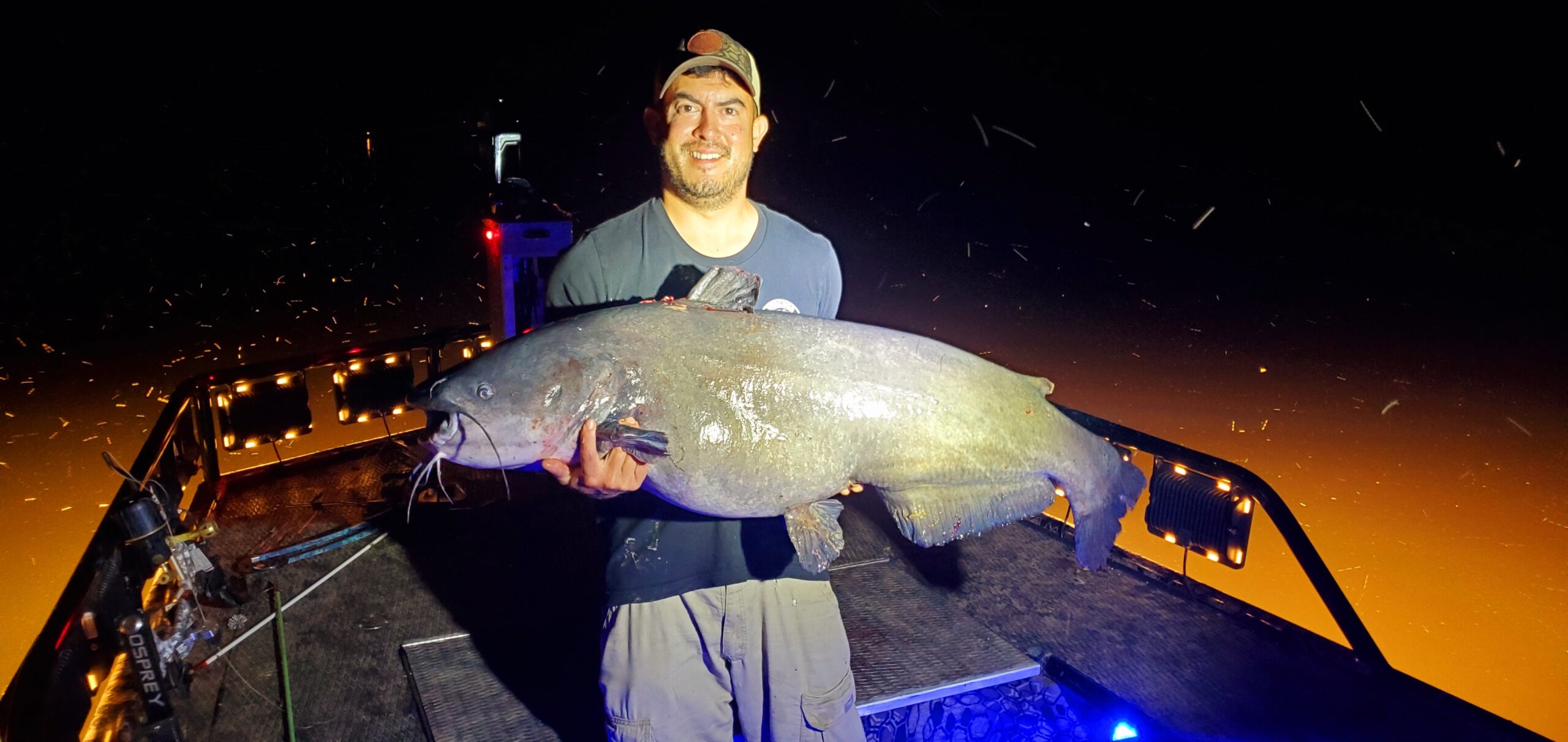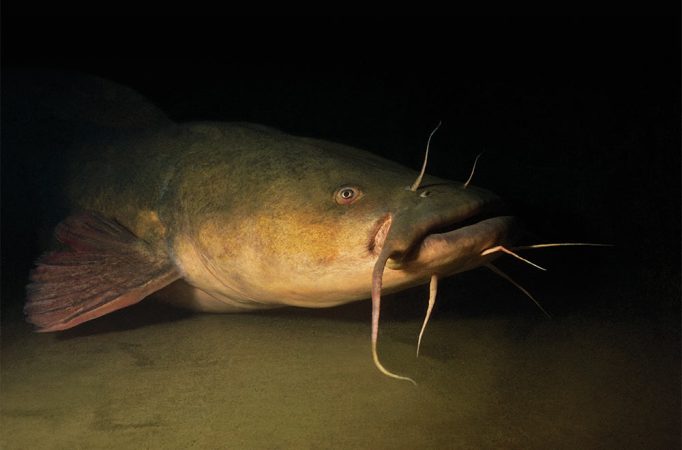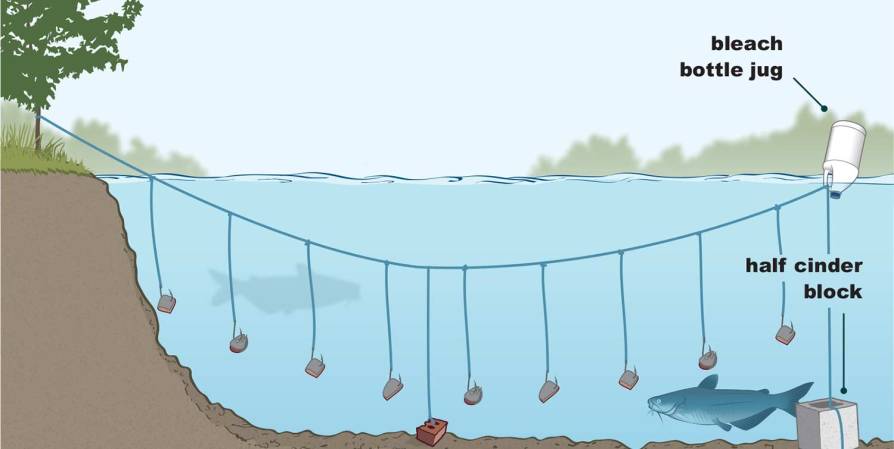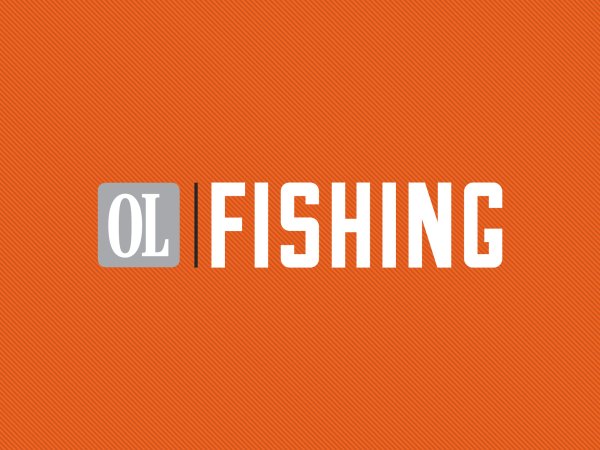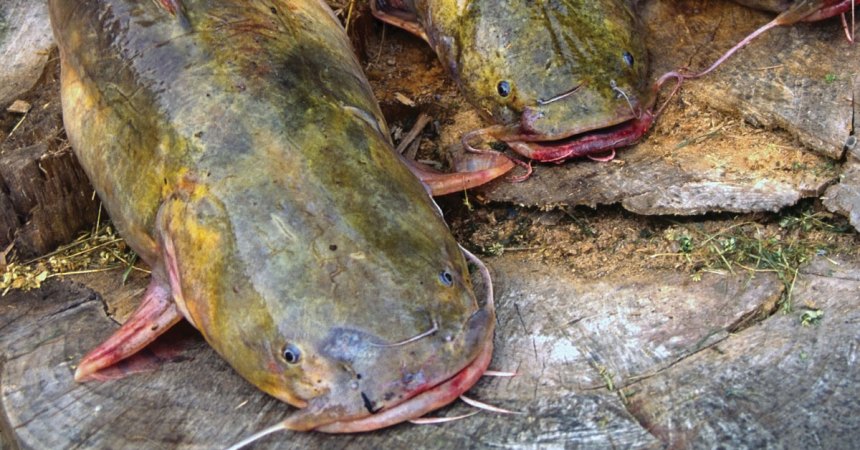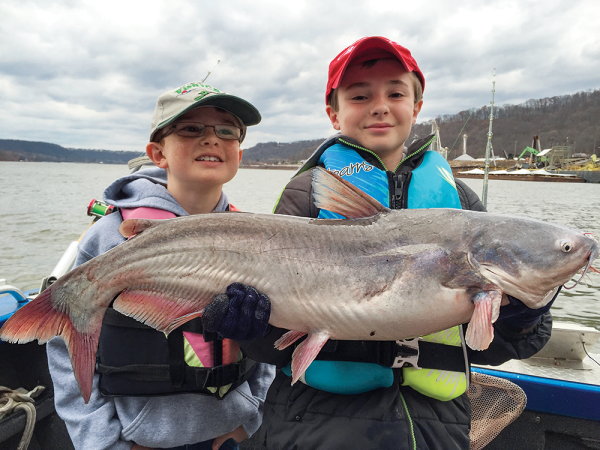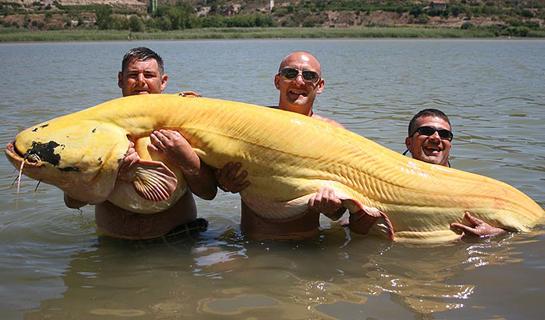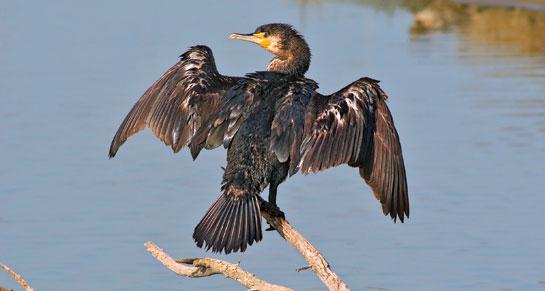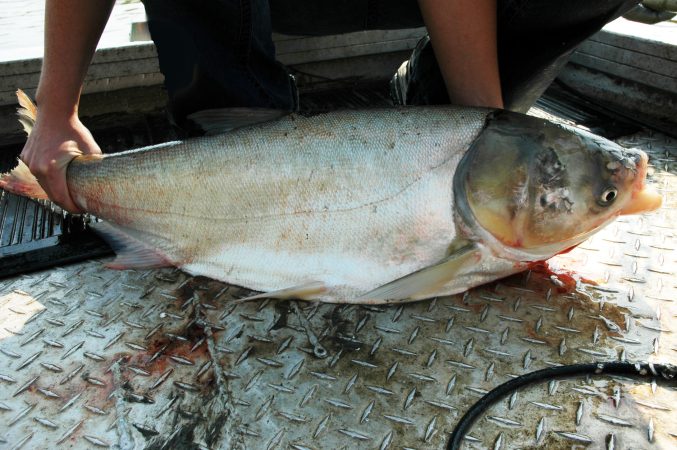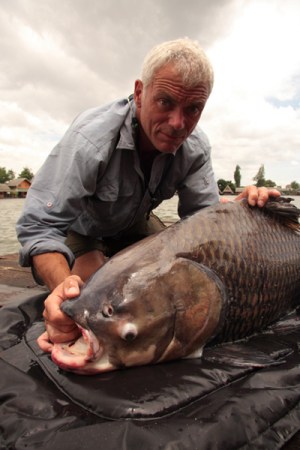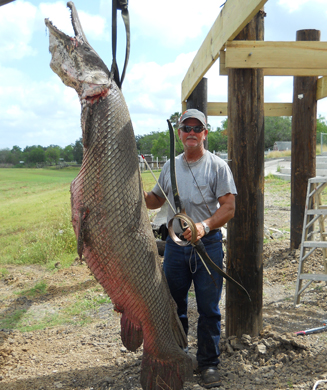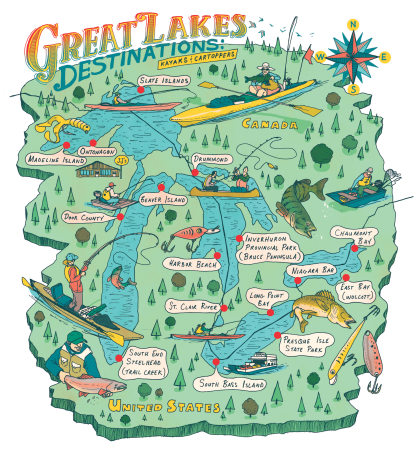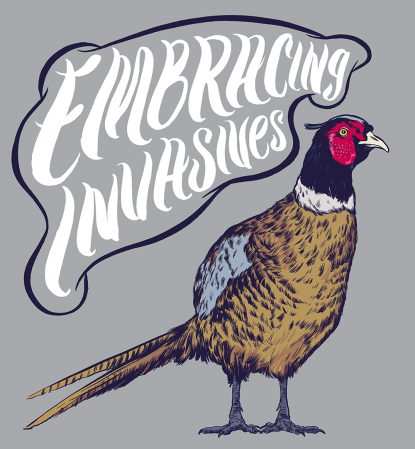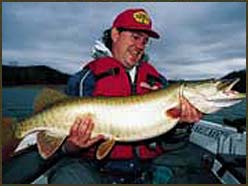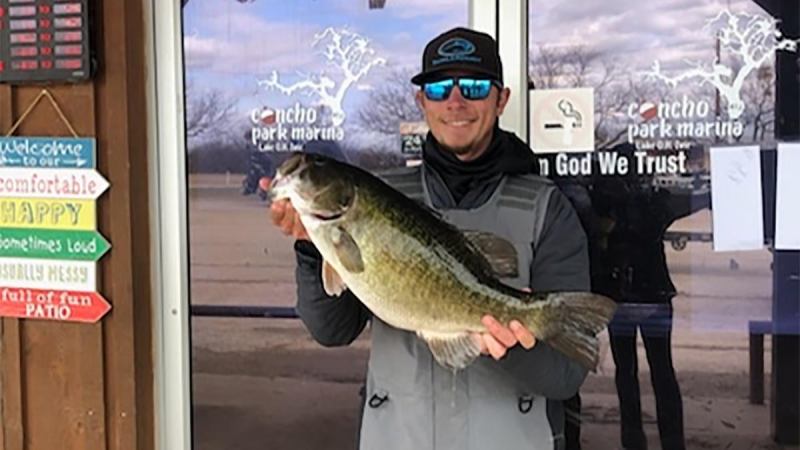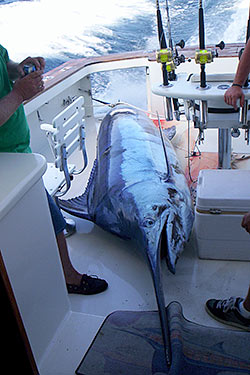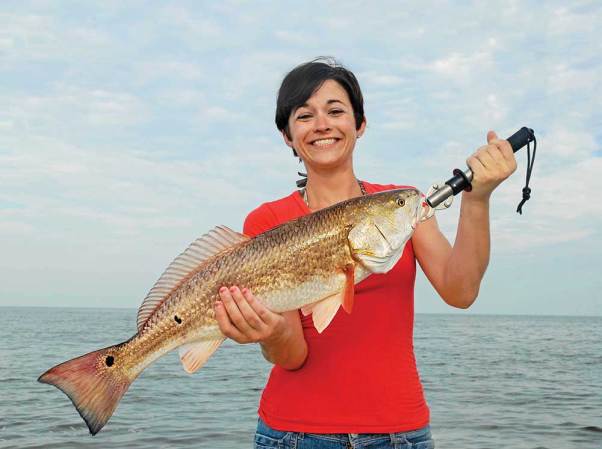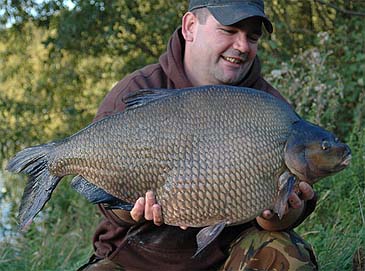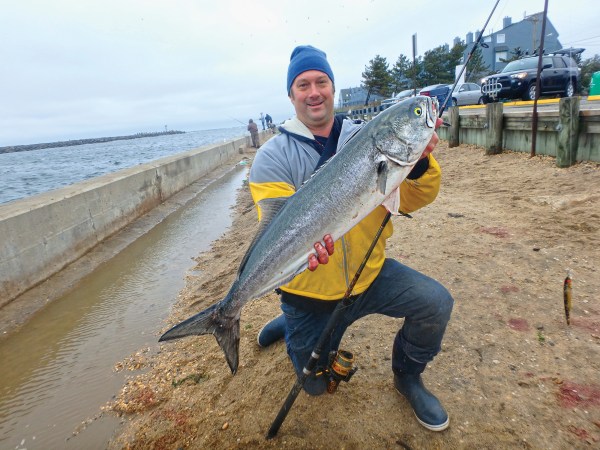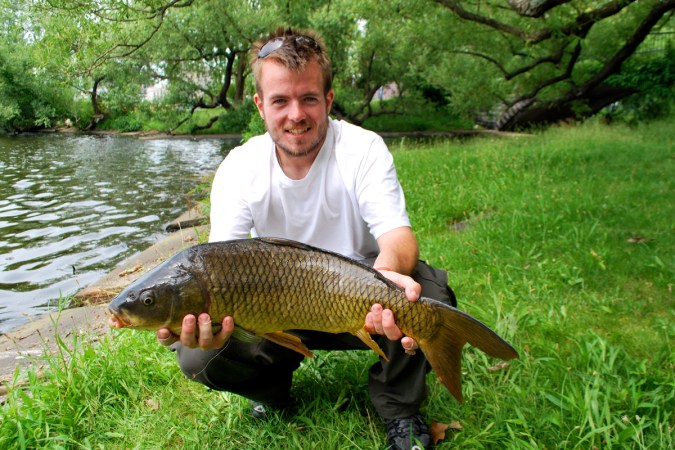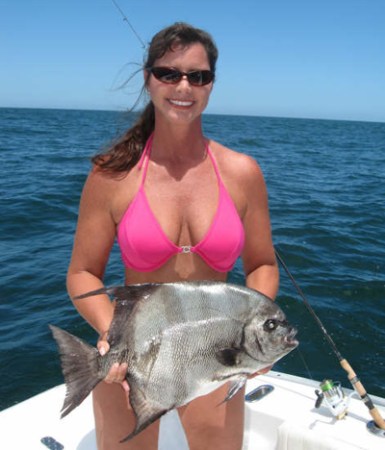The Virginia Department of Wildlife Resources announced on Tuesday that the 66-pound, 5-ounce blue catfish arrowed by Jason Emmel has been certified a state archery record for the species. The fish was more than three feet long and had a girth of 35 inches.
The longtime bowfisherman works as fisheries biologist, and he tells Outdoor Life that he wants to use his 15 minutes of fame to cast the sport of bowfishing in a positive light. Emmel says it can be done sustainably, and that it can actually improve the health of a fishery when archers target the right species.
Emmel, who lives in Louisa, Virginia, has about a decade of bowfishing experience under his belt, but he says the blue cat he shot late Monday night was the biggest fish he’s ever taken.
“I’ve shot a few grass carp in the 50-pound range,” Emmel explains. “But this is certainly the heaviest fish. I’ve shot longer fish, but yeah, this is a big one.”
He arrowed the catfish in the Pamunkey River, which is a tidal river located in the eastern part of the state, and one of two tributaries that join to form the York River. He was on the water that night with two fishing buddies when the big blue showed itself in the shallows.
“We came across a mud flat in about four feet of water and just saw this giant fish rise up,” he says.
Once he shot the fish, Emmel says he fought it for about 10 minutes before they even got a good look at it. He didn’t have a gaff with him, so his friend Joe Baer put another arrow in the fish and helped reel it in. It took the two of them and Nicholas Loving—who was out bowfishing for the first time that night—to haul the catfish into the boat.
“I realized it was bigger than I initially thought it was,” says Emmel. “We put it in the boat and realized we had something pretty special. I weighed it on the scale we had in the boat and thought we might have a potential new record.”
After the catch was verified and reviewed by the State Record Committee, the Virginia DWR certified the state record on July 19. The previous record was a 62-pound, 4-ounce blue cat that William Bates, Jr. shot in Occoquan Bay last year.
Speaking up for Bowfishermen
Emmel knows plenty about the sport of bowfishing, but he also knows a lot more about blue catfish than your average fisherman. As a biologist, Emmel has published several studies on the species, and he spent about four years learning about the diet of blue cats while at Virginia Tech. While the species is native to the southern United States, he explains that blue cats are an introduced species in Virginia. This means they are technically an invasive species, and Emmel says this is an important distinction he makes when it comes to bowfishing sustainably.
“I draw the line on invasive versus native. The blue catfish is not native,” he explains. “It was introduced by the Virginia Department of Wildlife Resources back in the 70s.”
He says that because bowfishing is such a visual sport, archers can pick and choose what fish they target and selectively cull problematic species like Asian carp. In this way, they can actually help boost native fish populations and improve the overall health of an ecosystem.
Virginia’s regulations allow bowfishermen to target common carp, goldfish, northern snakeheads, and gar from inland waters. They can also shoot grass carp in flowing rivers and streams, along with bowfin and catfish in tidal rivers (below the fall line) that flow into Chesapeake Bay. Waters stocked with trout are off limits, however. The state permits the use of both bows and crossbows, and all bowfishermen are required to follow creel limits and possess a valid fishing license.
“It’s a tool for controlling invasive species,” Emmel says, “whether it’s blue catfish or northern snakehead. Bowfishing is a good thing if it’s done in a responsible way.”
Read Next: Bowfishing Basics – 6 Tips to Get Started
Still, he says it can be difficult to convince more traditional anglers to come around to this point of view. Bowfishermen are often seen in a negative light by rod-and-reel anglers, many of whom practice catch-and-release.
“You know, you’re not going to catch and release a fish you stuck with an arrow,” says Emmel. “It’s always a battle to [give] the sport a positive image.”
Emmel also notes that, whether people want to accept it or not, bowfishing is quickly growing in popularity in Virginia and other states. Because it’s a blend between hunting and sight-fishing, it’s easy enough for both traditional anglers and bowhunters to take up the sport. It’s also flat-out fun, Emmel says.
“You don’t have to be quiet. You don’t have to be sneaking up on fish. You can be there talking with your friends or listening to music on the boat and just creeping around the shallows. It’s just a fun sport.”
